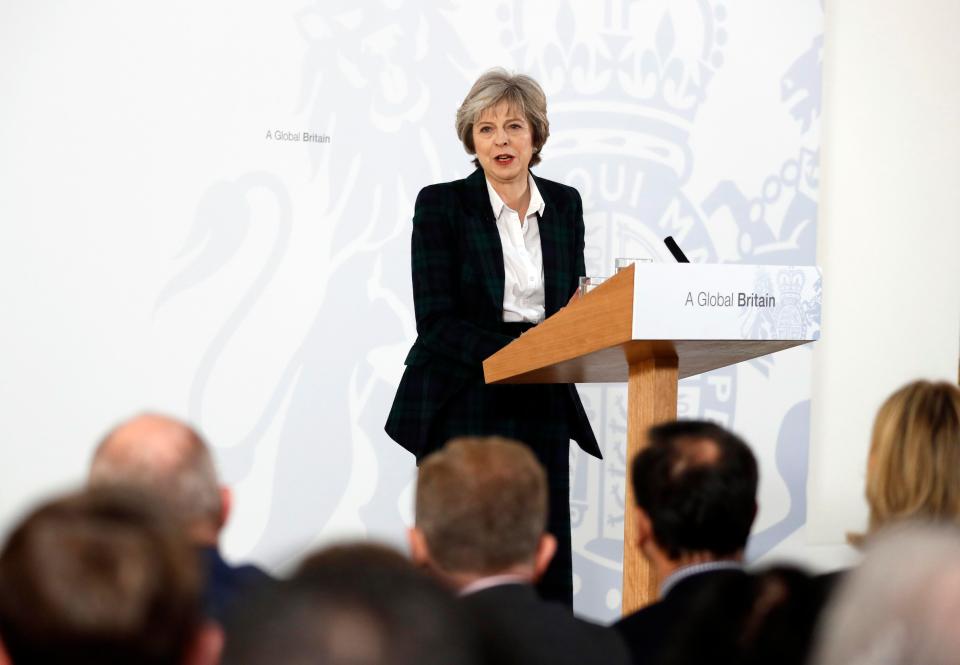Can Theresa May get a Brexit deal in 18 months? What happens if we don’t get one? How quickly can we replace all EU laws?
Theresa May has laid out her plan for Brexit - including leaving the Single Market, and taking back control of our borders and laws. But what are the details?

1. Can she clinch a divorce deal, a free trade agreement and a transition arrangement in just 18 months of Article 50 negotiations?
Thrashing out the details of Britain’s divorce from the EU, shaking hands on a free trade deal and implementing a smooth transition agreement is a mammoth task in the timeframe.
The PM has said she will trigger Article 50 - the starting gun on our exit negotiations - by the end of March.
But the EU’s chief negotiator Michel Barnier has insisted the package must be wrapped up by October 2018 to allow the 27 EU leaders time to rubberstamp it.
Downing Street are insistent a Brexit deal can be finalised by 2019.
Brexit Secretary David Davis has insisted the deals will be done at the end of two years but admitted putting them into practice would “take a little longer” - giving British firms up to two years to adapt.
2. What happens if we don’t get any deal, then what?
If Britain hasn’t done a deal at the end of the negotiation process World Trade Organisation rules would kick in automatically.
Britain is already a member of the WTO - individually and as part of the EU - which sets the global rules of trade and has 164 members.
Outside the EU and the Customs Union it is how Britain would access European markets.
Brexiteers are keen on this option, citing the example of China, whose export growth rocketed when it joined up. But it does mean trading with countries who may slap high tariffs on goods.
RELATED STORIES
3. How important is trade with the EU?
EU trade is important to us but it’s important to remember EU countries sell more to us than we flog to them - around £70billion in total.
British exports of goods and services to other EU countries was worth £220billion in 2015, with the EU exporting £290billion to us.
British firms sold around £515 billion worth of goods and services to foreign buyers in 2014, according to the Office for National Statistics.
About 44 per cent of the UK’s exports in goods and services went to the EU that year, 17 per cent to the US, 8 per cent to the BRICS economies - Brazil, Russia, India, China and South Africa and 30 per cent to the rest of the world.
But that trade pattern is now changing as we sell less year on year to the EU and more to other economies across the globe.
4. Can she get Britain’s WTO membership and new tariff schedule up and running, and in time for Brexit?
Every WTO member has a “schedule of commitments” that sets tariffs and quotas for each sector including agriculture, industry and services.
Britain would need to set out its own terms on these. If the UK adopts the same schedules as the EU has the process would be more simple, if ministers want to change them, it could take longer to agree.
International Trade Secretary Liam Fox opened talks with the WTO over our terms of membership in December which are expected to take two years.
Experts have described the negotiations as “tricky” but Dr Fox has been charming officials in Geneva throwing cocktails parties for ambassadors in a bid to smooth the process.
5. How quickly can she replicate all the EU’s current trade agreements with other countries for Britain?
The EU currently has more than 30 free trade agreements with more than 60 countries. Britain could look at “grandfathering” or copying those existing agreements with countries like South Korea, Singapore and Canada.
Vincenzo Scarpetta, senior policy analyst at the think tank Open Europe said officials should be looking at how they can make sure these agreements apply after Brexit.
6. If we do walk away without a deal, how quickly with she be able to replace lost EU trade with new deals with other countries, such as the US and India?
If Theresa May decides EU officials have offered Britain a bad deal, she’s pledged to knock it back. The biggest prize lies in signing deals with countries who haven’t got agreements with the EU.
That’s the US - where President elect Donald Trump has already promised a quick deal - India, Australia and New Zealand.
A report by the Open Europe think tank last year said the broader the agreement, the longer it takes to negotiate.
Deals can take three to four years or complex ones up to a decade to thrash out. But Mr Scarpetto said in some cases for the UK it could be much quicker because Commonwealth countries like Australia and New Zealand have such close cultural links and common history with Britain.

















